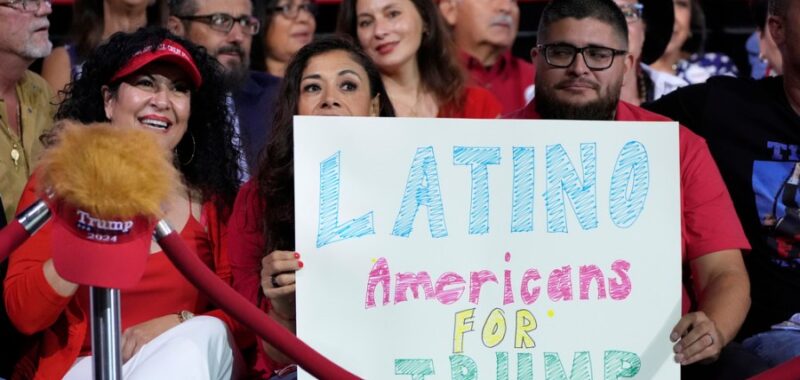
During every presidential election cycle, we hear political analysts or pundits talking about the so-called “Sleeping Giant” that’s the “Latino vote” — and how, if this giant awakens, it will be the determining factor for candidates seeking the White House.
After the results in this week’s presidential election, the data show only two realistic scenarios regarding the Latino electorate. One scenario is that the Latino electorate is not monolithic but rather reflects vastly different personal and familial circumstances, cultural backgrounds, and regional differences. With Latinos in the United States originating from more than 20 countries, each with different cultural, political and historical backgrounds, it’s no surprise there are clear differences in their voting patterns.
For example, Cuban Americans in Florida traditionally identify as Republicans based on their anti-communist stance. The political priorities of Mexican Americans in California versus, for example, Texas or Illinois, are varied and often framed by issues that impact them the most, like immigration, labor rights, social services or the economy. Further complicating matters is the idea that first-generation immigrants are very different from their second or third generation U.S.-born children or grandchildren — and the interests of Latinos in urban areas, such as Los Angeles, New York or Chicago, are vastly different from those in rural Arizona or Texas.
There is a second scenario, however, and it’s one that should trouble Democratic Party leaders the most. And that is that there truly is a Latino voting bloc, but it’s skewing Republican.
It is easy to dismiss this scenario given the long history Latinos have had with the Democratic Party — and its belief that the Latino community is a Democratic stronghold. However, the results of the recent presidential election suggest that it might not be as far-fetched as once thought. Could it be that Latino voters are better aligned with many core conversative principles? According to CNN’s exit poll data, Latino men supported Donald Trump in 2024, 55 percent, up from 36 percent in 2020. Latinas also moved toward Trump. In 2020, Biden received 69 percent of the Latina vote. This year, Harris captured only 60 percent.
Has the GOP’s emphasis on family values, religious freedom and economic opportunity begun to resonate more deeply with a broader segment of the Latino electorate? Do Latinos — particularly Latinos living in more conservative or rural areas — feel disconnected from the Democratic Party’s focus on social programs and, in some cases, on issues that seem to prioritize immigration reform over the economic needs of working-class families?
These are all questions that leaders of the Democratic Party need to think deeply about over the next four years, and it represents one of the party’s most pressing and fundamental challenges. The Democratic Party has long assumed that Latinos would simply remain a reliable base of support and, some argue, that the party took the Latino community for granted. If that’s true, this election shows that Trump and the GOP certainly filled the void. This shift could be a game changer in future elections, as the Latino vote — once seen as a reliable Democratic constituency — begins to split more even, or (dare I say) even tilt towards the Republican Party in battleground states.
All of these questions and more need to be addressed and answered — and there certainly needs to be a reckoning within the Democratic Party about how we got here. Regardless of where you land on this issue, one thing is clear: The outcome of future elections will depend on which party does a better job of understanding and responding to the changing dynamics of the U.S. Latino electorate.
Pedro DeJesus is an Illinois attorney and a passionate advocate for civic engagement. He is deeply involved in understanding the evolving political landscape among diverse communities, including Latinos in the U.S.

